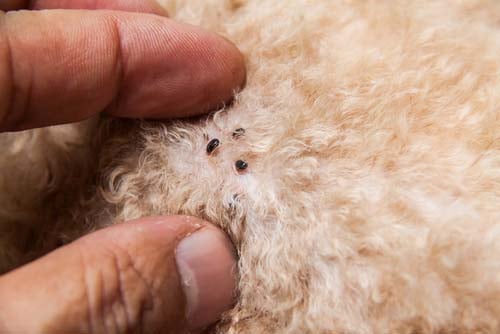How To Remove A Tick From A Cat – Top Dog Tips
Ticks are some of the worst parasites cat owners need to deal with. They’re most prevalent in the Eastern part of the United States, mainly in Rocky Mountains. Ticks are also found in limited areas on the west coast. Ticks are attracted to warmth and motion, making cats a great target, and knowing how to remove a tick from a cat is crucial.
While feeding on your pet’s blood, ticks can pass a number of dangerous diseases:
- Lyme Disease
- Anemia
- Cytauxzoonosis (also known as bobcat fever)
- Ehrlichiosis
- Anaplasmosis
Ticks live in tall plants or grass in and around wooded areas. The more rural the area you live in, the more at risk your cat is of contracting a tick. There are products to prevent ticks, but it’s best to check your cat for these parasites daily whether you use a preventative or not. Look around your cat’s ears, between her toes, on her face and belly, between skin folds, and around the area where her back legs meet the body.
How To Remove A Tick From A Cat
Supplies You’ll Need
You’ll need to have a few supplies to remove a tick from your cat. DO NOT try to remove the tick with your fingers. Always keep the following supplies in your pet first aid kit.
- Latex gloves
- Rubbing alcohol
- Tick remover tool (or tweezers)
- Resealable plastic bag or airtight container
- Antiseptic spray or wipe
How To Remove A Tick From A Cat – Step-by-Step
Once you have all the supplies gathered by your side, it’s time to remove the tick. I recommend using a tick grabber/tick remover tool, because they are specifically designed to remove the entire tick (including the mouth piece, which is crucial).
You can use regular tweezers, but the risk of ripping off the tick’s body and leaving its mouth piece embedded in your cat’s skin is much greater when using tweezers. Leaving the mouth parts in will increase your pet’s chance of contracting a disease and can be dangerous to your pet.
Before you begin, put on the latex gloves. Since my cat didn’t actually have a tick on him in the video, I didn’t have to wear gloves. However, when you’re dealing with real ticks, it is important to protect yourself from any diseases they may be carrying by wearing gloves.
1. Get the tick remover (or tweezers) as close to the skin as possible. To do this, pull the skin tight.
2. Place the tick grabber around the tick’s body, and press it against your pet’s skin.
3. Close the grabber tightly and firmly, then pull the tick straight out. DO NOT twist the tick as you pull, because that may separate the body from the mouth piece. Instead, use gentle pressure and pull straight upwards, so you don’t crush the parasite’s body.
4. Put the tick directly into the resealable bag or airtight container. Do not touch the tick with your hands.
5. Add a small amount of rubbing alcohol to the bag/container. You can also do this before removing the tick, as I did in my video above. The rubbing alcohol will kill the tick, while still allowing you to keep it for testing if your cat becomes sick.
6. Clean the tick bite site with an antiseptic spray or wipe.
Keep the tick in the container for at least 3-4 weeks. Lyme disease, the most common disease transmitted by ticks, can take up to a month to show symptoms on cats.
After Removing the Tick
You’ll need to monitor the tick bite site daily for 3 to 4 weeks. You may notice a bit of redness around the bite for the first few days, but that should slowly go away. The bite site may also scab over, which is completely normal.
However, if you notice that your cat is acting strangely after the tick removal, or you see any signs of swelling or a rash near where the tick bite was, you’ll need to bring your pet (and the tick in the container) into your veterinarian’s office for testing. You should also keep an eye on your pet for the next 2 months to make sure they don’t show any signs of other tick-spread diseases. Look out for the following symptoms:
- swollen lymph nodes
- fever
- reluctance to move
- lethargy
- loss of appetite
- any strange behavior
If you notice any of these symptoms, make an appointment with your vet right away. If you still have the tick (which you should), bring it with you to your appointment.
READ NEXT: Tick Repellent for Dogs – Natural vs. Chemical and Everything Else You Should Know
Related







aviator giriş https://aviatoroyna.bid – aviator oyunu 20 tl